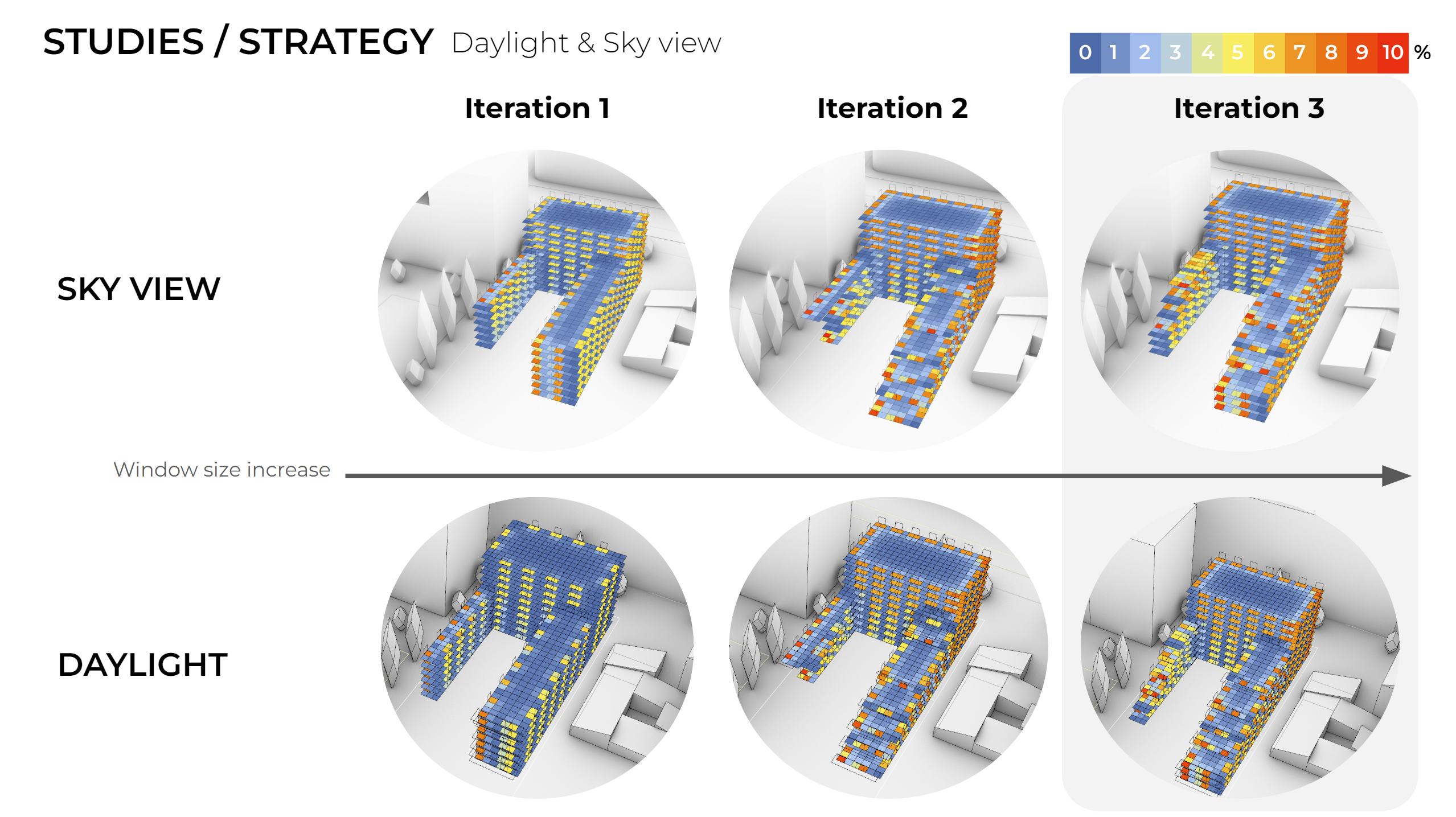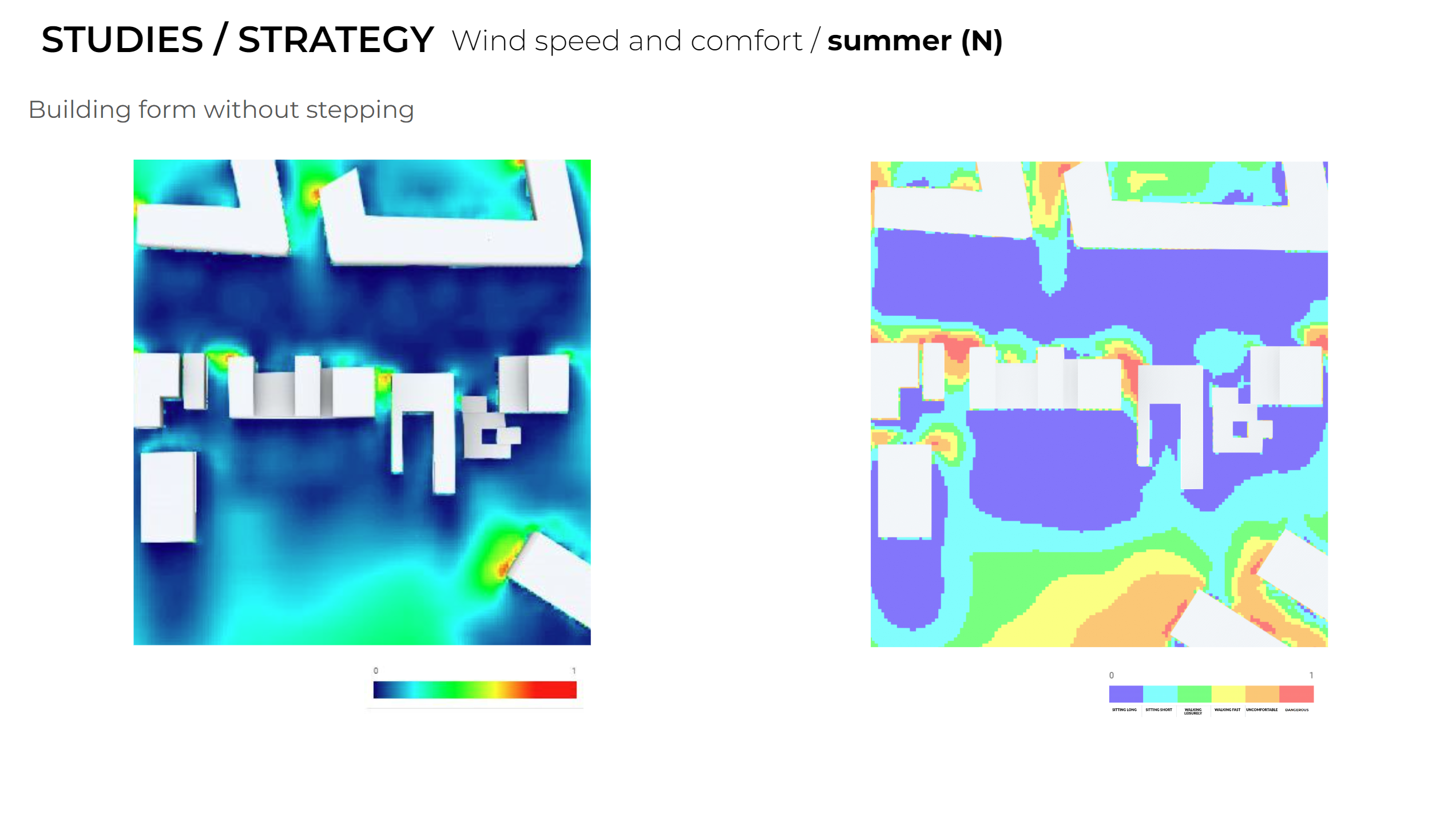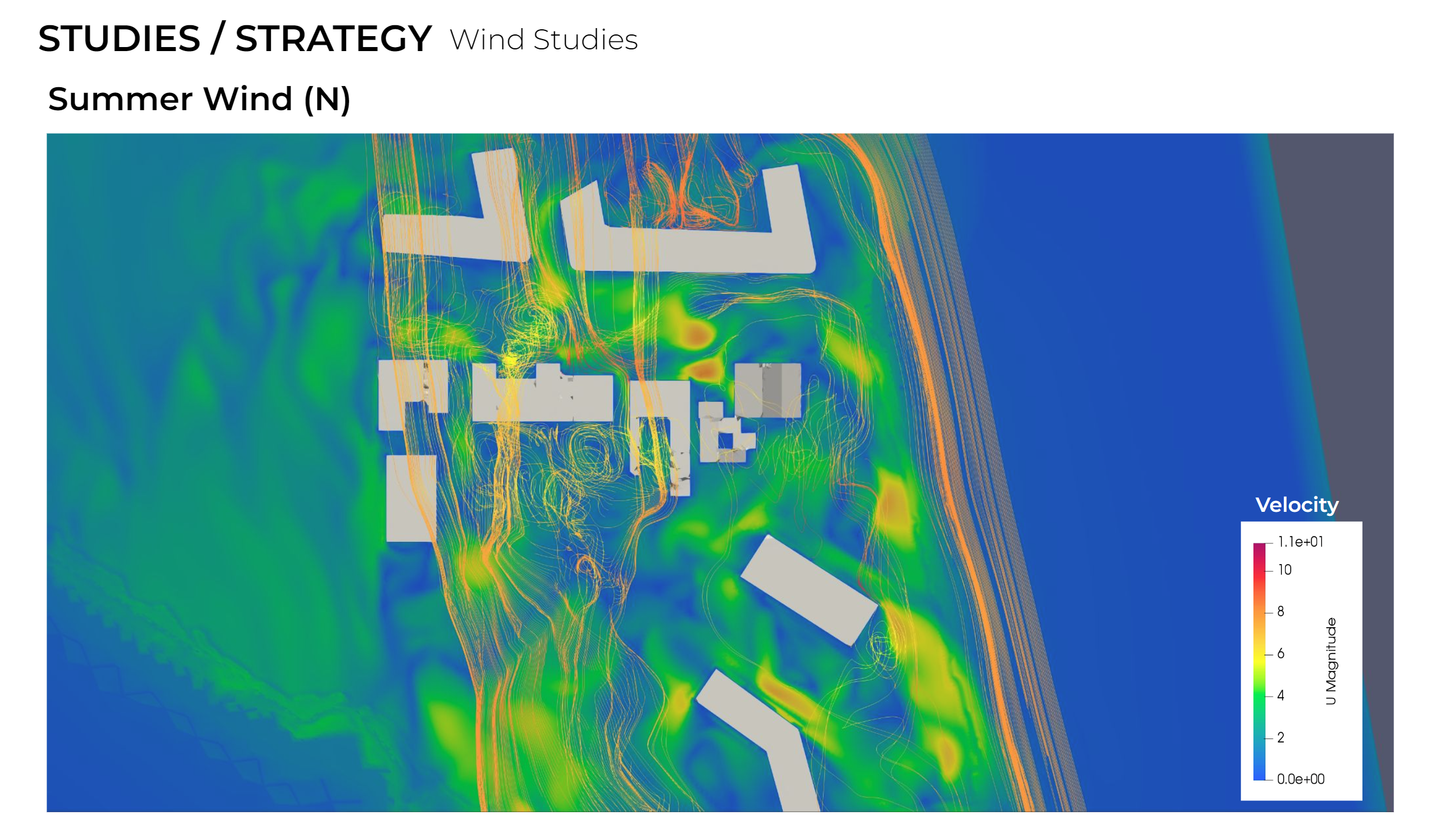Initial analysis:

By conducting air temperature analysis for summer and winter we have concluded that Uccle has a cold climate with some hot temperatures in summer. Which mean that we may need to have some heating strategies in order to have comfortable temperatures in the building. Then we continued with the relative humidity analysis where we understood that the city is very humid almost over all the year, over 70%. Our next step was to run a wind rose analysis. Generally the most dominant winds come from SW. With SSW being the most dominants wind for winter and WSW and N for summer. So we need to block the winter winds and allow N winds during summer.
UTCI studies guides us to the following, allowing wind with or without sun results to comfort for 35% of the year. While blocking the wind doubles the amount to 60%. These studies indicate that our strategy should block wind and utilize sun from Nov to Apr & also block wind and add shadowing elements from May to Oct.
As we understood from the prior analysis, With the psychrometric chart we can see that not only during winter some heating strategies are needed in order to achieve comfort indoors but also in summer in this case we provide passive solar heating and also adding internal heat capturing.

Having in mind that we want to have as much sun as possible in order to capture the radiation, we do some deformation ?n the building mass.
As shown in form 2, we experiment with the U shaped form but the atrium is not getting much sunlight, then in form 3, by lowering the heights of some of the masses we achieve more sunlight but the courtyard doesn’t appear to be an effective strategy, so we keep the U shape with lowering the heights as a stepping in form 4. Which enables more sunlight to enter the inner faces of the U-shape.

In Summer form 3 reaches up to 16 degrees, while by opening the courtyard in form 4 we achieve up to 2,5 degrees more in the outdoor area.

In winter this iteration from form 3 to 4 helps us to introduce more solar radiation and heating up the outdoor or the atrium of the building, although this visualization can not be considered completely accurate but it gives us a hint on the effect of the building with and without the courtyard.

Our next analysis will be daylight and sky view factor, Which we are analyzing in order to minimize the use of indoor artificial lighting during the morning time. The first iteration with straight facades does not allow for a sky view and daylight into lower floors. Our first strategy is to introduce a stepping mass and increase the window size with the last iteration we refine the stepping and leave the window sizes as it was noticed that it is already effective allowing more natural light capture indoors and higher sky view factor.

We simulated our form without the stepping and he see that we have high speeds in the courtyard, wind hits the facades and accelerates which leads to making it suitable only for sitting for a short time and walking


For summer we have a calm courtyard which is suitable for sitting either for long or short periods.

During summer we run the simulation for N wind In summer we observe some winds entering the atrium with low velocity which is beneficial for this outdoor area which is having direct solar radiation to help as achieve thermal relief during hot days

